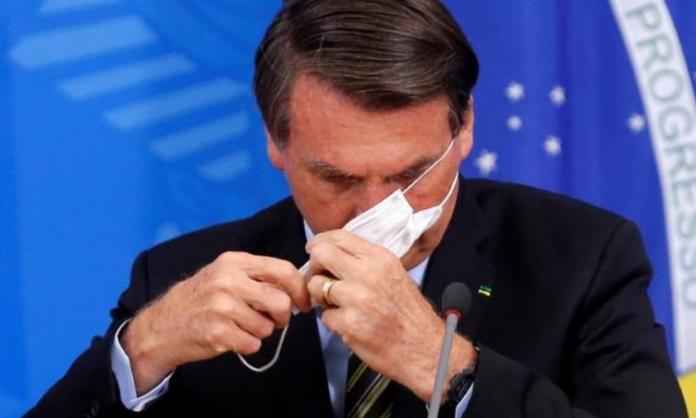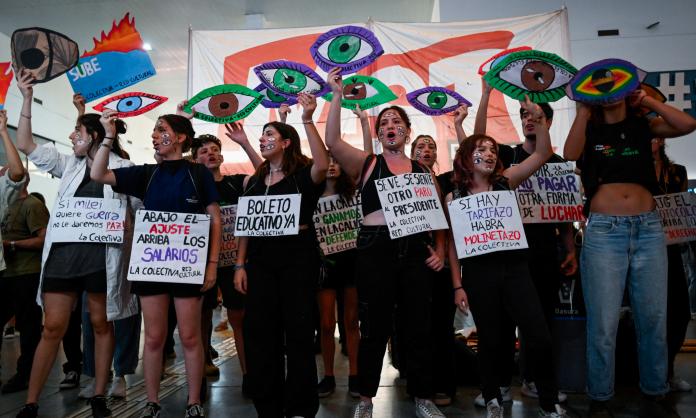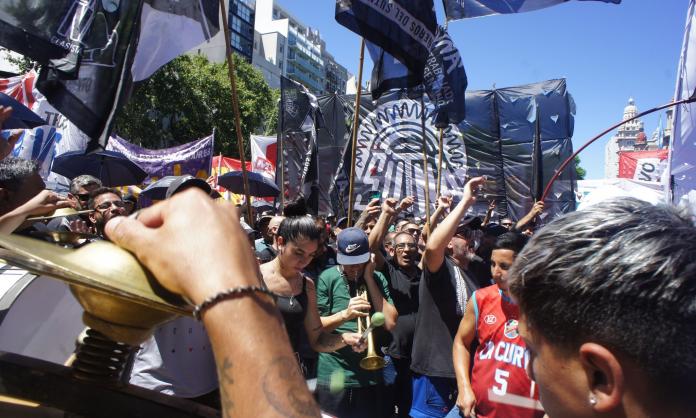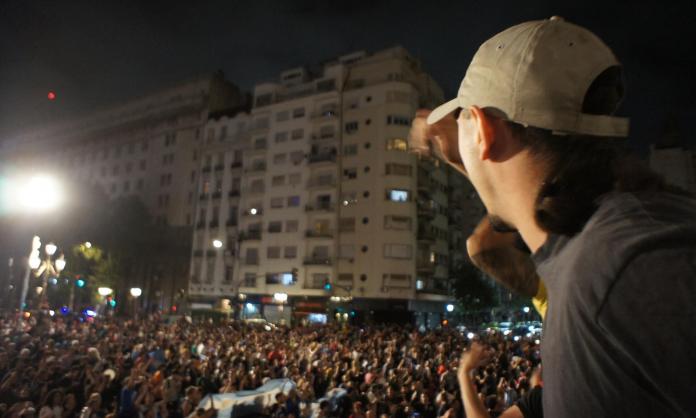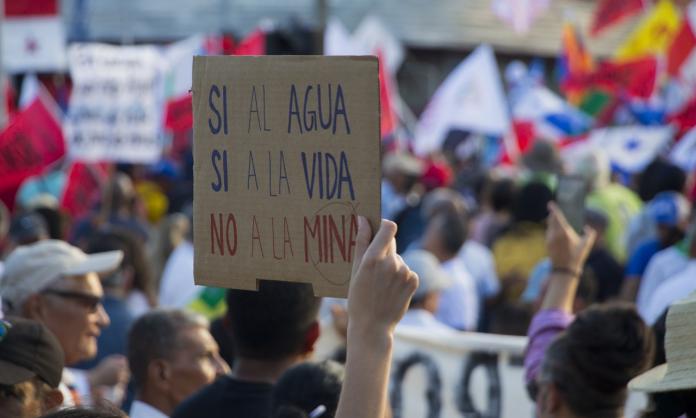“So what? I’m sorry, what do you want me to do about it?” Such was the attitude of far-right Brazilian president Jair Bolsonaro when journalists asked him on 28 April to comment on the thousands of deaths around the country from COVID-19.
Since then, the death toll has surpassed 22,000, according to official figures, although there is evidence that official figures are not representative of the true impact of the virus, because Brazil has one of the lowest testing rates in the world. For instance, a joint study by the Federal University of Santa Catarina, Univille University and the University of Waterloo (Canada), estimates that the number of cases in the state of Santa Catarina could be four times higher than the government says.
The effects of the coronavirus outbreak are exacerbating economic problems that were evident well before the pandemic. Brazil suffered a significant economic contraction in 2015-16 due to falling commodity prices. Economic growth has been slow ever since. The value of the real, the national currency, is at an all-time low after a bigger than expected central bank rate cut to stave off what could be the worst annual economic contraction in half a century, with gross domestic product expected to shrink by a further 7.7 percent this year. Workers have borne the brunt of the economic downturn, 1.2 million losing their jobs in the first quarter of 2020, pushing the unemployment rate to more than 12 percent.
The economic and health crises have precipitated a political crisis, sections of the establishment splitting on how best to save Brazilian capitalism and ward off social unrest. On the one hand, Bolsonaro wants to downplay the severity of the pandemic and is willing to let the virus run rampant through the population to avoid the economic costs of a lockdown. In March, he dismissed the virus as “just a little cold”, a line he continues to stand by despite the incredible death toll.
In contrast to Bolsonaro’s laissez-faire attitude, many state governors have restricted the activity of businesses and implemented lockdowns with the support of the Supreme Court. Yet the lockdowns are not based on humanitarian considerations. They have been implemented in the interests of Brazilian capitalism. The working class and the poor have been given little to no support from the state governors. Health workers are suffering in appalling working conditions. CNN reported on 8 May that Brazil has a higher death rate of nurses than the US. Many are under pressure to keep working despite presenting with symptoms. State hospitals have only enough kits to test patients who have serious symptoms of the disease. In the state of Rio de Janeiro, health workers have been forced to pay to be tested at private clinics.
Simply implementing lockdowns is insufficient when millions do not have access to basic shelter. Brazil is riddled with overcrowded and poor housing. More than 31 million people do not have access to clean water, and almost 6 million do not have bathrooms in their homes.
The resignation of justice minister Sergio Moro shows just how deep is the split in the ruling class. He was the face of the institutional coup against the Workers’ Party (PT) in 2016 and threw his support behind Bolsonaro’s election campaign in 2018. Moro is now using language about corruption similar to that which he used to crush the PT, to justify joining with the rest of the establishment in opposing Bolsonaro.
Bolsonaro was never the ideal representative for the ruling class. The impeachment of PT president Dilma Rousseff centred on corruption charges. But the main conservative parties were up to their necks in bribery and fraud. The establishment needed a “clean” candidate to be their public face in the 2018 presidential elections. The conservative capitalist class mobilised behind Bolsonaro, a previously insignificant politician from a small hard-right party, presenting him as an alternative to mainstream politics, untainted by corruption. This won him a significant voter base.
However, the alliance was always fragile because the traditional establishment parties were simply using him to regain control of government. Parliamentary support for Bolsonaro has since disintegrated. The split has caused a political crisis in the ruling class that is being felt in society more broadly.
Alarmingly, it has opened a space for the far right, already emboldened by Bolsonaro’s election, to continue to grow. The president is stoking this fire by campaigning for the lockdowns to be lifted. In recent weeks, he has mobilised large numbers for demonstrations in various cities, disregarding health advice and social distancing measures. Images circulated of the president shaking hands and taking photos at a demonstration in the capital calling for the closure of the Supreme Court and Congress.
Participants held placards demanding “military intervention with Bolsonaro” and the reinstitution of a dictatorship-era decree imposed by military rulers in 1968 to suffocate their political opponents. Known as AI-5, the decree allowed many thousands to be persecuted, tortured and killed. While he commands only a minority in the Congress, Bolsonaro has the backing of the military, which formed an important base for him during the 2018 election. If the far right grows, backed by the armed forces, there is a serious threat of a more authoritarian and militarised government under Bolsonaro.
Meanwhile, the reformist left has failed to oppose the ruling class and now it plays the electoral game. The PT and the left-wing Socialism and Liberty Party have been seeking an alliance with the Congress and the governors, the same institutions that were instrumental in the impeachment of Rousseff and the rise of the far right. Nothing progressive can come from this. The reformist left is more concerned with maintaining parliamentary alliances, which they believe will serve them in the upcoming local government elections and the 2022 presidential race, than with mobilising the working class to fight Bolsonaro and the right.
The crisis also offers opportunities for the far left. The opportunities present themselves in the glimmers of resistance from workers and students starting to spring up around the country. Health workers have been protesting and threatening to go on strike due to a lack of personal protective equipment. Medical residents hired to fight COVID-19 started a strike because they haven’t received their salaries in the past couple of months, and dozens have participated in a protest outside the Ministry of Health building in Brasilia. Health workers from the biggest public hospital in Amazonas, one of the biggest COVID hotspots, threaten to go on strike due to poor working conditions, including that around 5,000 of them have been receiving late payments or no payment at all for eight months. Students have been mobilising to put pressure on the government to postpone the high school national exam, and in May they organised an online protest.
A political crisis has engulfed the Brazilian ruling elite as they grapple with the pandemic and associated economic fallout. The rise of the far right and Bolsonaro’s military agenda could have devastating consequences for the mass of working people still reeling from the crushing defeat of the PT in recent years. To take on this growing threat, the socialist left will need to intervene in struggles arising in workplaces and schools to help build a movement capable of confronting it. Wherever there is resistance, no matter how small, it presents an opportunity for the left to grow independently of the reformist parliamentary forces.




